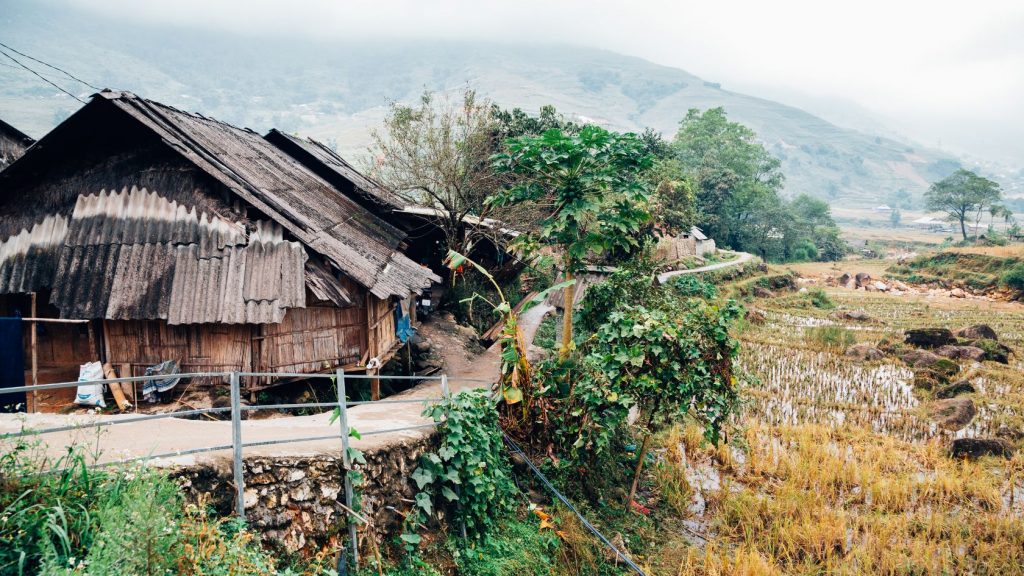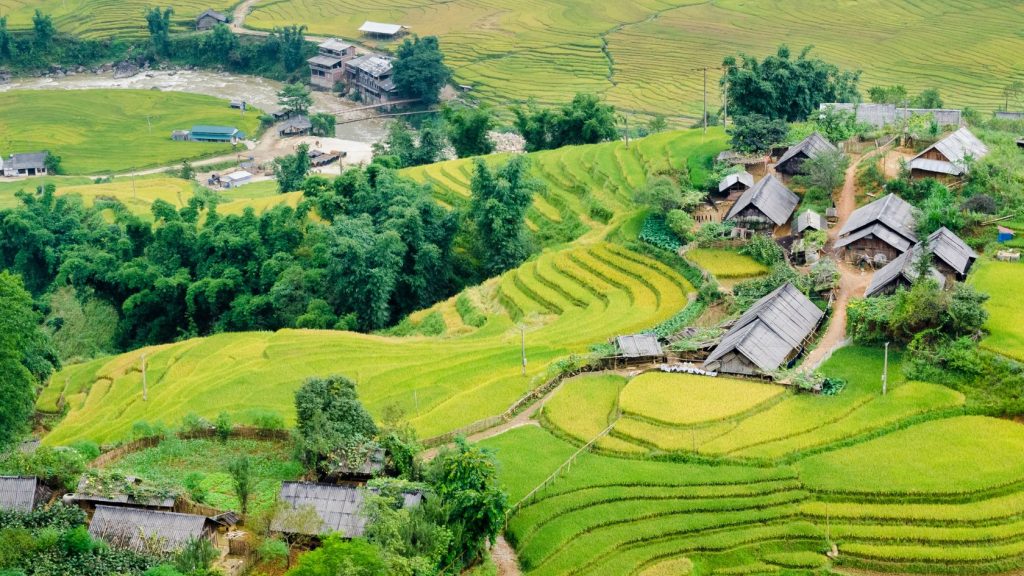Nestled in the misty mountains of northern Vietnam, Sa Pa is a haven for nature enthusiasts and cultural explorers alike. Known for its breathtaking terraced rice fields, vibrant ethnic villages, and majestic peaks, this serene destination is a dream come true for trekking enthusiasts. If you’re new to trekking and planning to explore Sa Pa’s trails, this beginner’s guide will equip you with essential tips for a rewarding experience.
Why Trekking in Sa Pa is a Must-Do
Sa Pa’s landscapes offer a harmonious blend of natural beauty and cultural richness. The verdant valleys, winding trails, and vibrant local life provide an immersive experience unlike any other. Trekking here is about the journey and connecting with the culture of Vietnam’s ethnic minority groups, such as the Hmong and Red Dao communities.
Best Time for Trekking in Sa Pa
The ideal trekking season in Sa Pa is from December to June, with March to May being particularly favorable. During this time, the weather is pleasant, the skies are clear, and the terraced fields are lush with vibrant greens. Avoid the rainy months of July and August, as the trails can become muddy and challenging. Winter (December to February) brings colder temperatures and occasional frost, but the misty atmosphere creates a magical ambience.
How to Reach Sa Pa
Reaching Sa Pa, nestled in the stunning mountains of northern Vietnam, is straightforward, thanks to several convenient transportation options. Here’s a guide to getting to Sa Pa:
From Hanoi to Sa Pa by Bus or Limousine
For budget-conscious travellers, Hanoi to Sa Pa buses and limousine services are the most economical and comfortable options. The journey typically takes 5-6 hours, offering scenic views.
- Buses: Standard buses are affordable, with around 250.000 VND as starting fares. These buses are equipped with reclining seats, air conditioning, and occasional stops for refreshments.
- Limousines: For added comfort, luxury limousine buses provide spacious seating, onboard Wi-Fi, and refreshments. Tickets start from 400.000 VND, making them an excellent value for those seeking a relaxed travel experience.
Both services frequently operate throughout the day, with pickup points in central Hanoi and drop-offs at Sa Pa’s town centre. Top operators include Inter Buslines, Luxury Van Limousine, Sapa Explore, King Express, Kadham Bus etc.
By Train from Hanoi to Lao Cai
Another popular option is the night train from Hanoi to Lao Cai, located 30 kilometres from Sa Pa. The train journey takes approximately 8 hours, with options ranging from basic seats to comfortable sleeper cabins. Once in Lao Cai, you can take a 1-hour bus or taxi ride to Sa Pa.
By Private Car or Motorcycle
For those seeking flexibility, hiring a private car or riding a motorcycle is an excellent choice. The scenic drive from Hanoi to Sa Pa takes around 5-6 hours and offers plenty of opportunities to stop and explore.
Choosing the right mode of transport depends on your budget, time, and preference for comfort. Whether you opt for a budget-friendly bus or a scenic train journey, the adventure of reaching Sa Pa is just the beginning of your unforgettable experience.
Top Beginner-Friendly Treks in Sa Pa
Cat Cat Village Trek

- Duration: 2-3 hours
- Highlights: This short trek is perfect for beginners. It takes you through the charming Cat Cat Village, home to the Hmong people. The trail offers stunning views of terraced rice fields, waterfalls, and traditional Hmong houses. Along the way, you’ll encounter locals showcasing their crafts and way of life.
Lao Chai and Ta Van Village Trek

- Duration: 4-5 hours
- Highlights: This moderate trek combines natural beauty with cultural immersion. The trail passes through verdant valleys and leads to Lao Chai and Ta Van villages, where you can learn about the customs of the Hmong and Zay people. It’s an excellent opportunity to explore Sa Pa’s iconic rice terraces up close.
Ta Phin Village Trek
- Duration: 3-4 hours
- Highlights: Ta Phin Village is home to the Red Dao people, known for their vibrant traditional attire. This trek takes you through lush woodlands and peaceful valleys, offering a chance to interact with locals and witness their unique customs.
Mường Hoa Valley

- Duration: 1 day
- Highlights: The Mường Hoa Valley Trek is one of the most picturesque and beginner-friendly routes in Sa Pa. Renowned for its breathtaking terraced rice fields and the tranquil Mường Hoa River, this trek offers an immersive experience in the heart of Sa Pa’s natural beauty. Spanning around 8-12 kilometers depending on the route, this trek can be completed within a day at a leisurely pace. It’s an ideal choice for those seeking a blend of natural beauty and cultural exploration without strenuous hiking.
Essential Trekking Tips for Beginners
Prepare Physically
While Sa Pa’s beginner treks are manageable, it’s a good idea to prepare your body for the trails. Take short walks or hikes before your trip to build stamina. Focus on strengthening your legs and improving your balance.
Dress in Layers
Sa Pa’s weather can change dramatically within a day. Wear breathable, moisture-wicking clothing and pack a lightweight jacket for cooler mornings and evenings. Waterproof gear is essential during the rainy season.
Invest in Good Footwear
Comfortable, durable hiking boots with good grip are a must. Break them in before your trip to avoid blisters. Waterproof boots will keep your feet dry if your trek involves muddy trails.
Stay Hydrated and Energized
Carry plenty of water and pack high-energy snacks like nuts, dried fruit, or energy bars. Staying hydrated and fueled will keep you energized for the entire trek.
Use Local Guides
Hiring a local guide not only enhances your experience with insights into Sa Pa’s culture but also ensures your safety. Guides know the terrain well and can recommend the best routes based on your fitness level.
Packing Checklist for Sa Pa Treks
- Daypack: Lightweight and comfortable for carrying essentials like water, snacks, and a camera.
- Waterproof Jacket: Protects you from Sa Pa’s unpredictable rain showers.
- Comfortable Clothing: Breathable layers that allow mobility and adaptability to weather changes.
- Sunscreen and Hat: The high-altitude sun can be intense.
- First-Aid Kit: Include band-aids, antiseptic, and essential medications.
- Cash: For purchasing snacks or handicrafts from local vendors during your trek.
Staying Overnight: Homestays in Sa Pa
One of the highlights of trekking in Sa Pa is the opportunity to stay in a local homestay. Many treks include overnight stays in ethnic minority villages, where you can enjoy hearty home-cooked meals and authentic cultural experiences. It’s a chance to connect with locals, learn their traditions, and share stories.
Challenges You May Face when Trekking in Sa Pa
Varying Terrain
Even beginner treks in Sa Pa may include muddy paths, steep inclines, and uneven ground. Walking poles can help with balance and reduce strain on your knees.
Sudden Weather Changes
Sa Pa’s mountain weather is notoriously unpredictable. Always carry a waterproof jacket and extra layers to stay comfortable.
Altitude Effects
Though Sa Pa isn’t extremely high, some travelers may experience mild altitude discomfort. Walk at a steady pace and take breaks to adjust.
Conclusion
Trekking in Sa Pa for beginners is an unforgettable experience, offering a mix of stunning natural landscapes and rich cultural encounters. With proper preparation, the right gear, and an open mind, you can easily navigate the trails and fully immerse yourself in Sa Pa’s beauty. Whether you’re trekking through the iconic rice terraces or engaging with local ethnic communities, every step is a memory waiting to be made.
